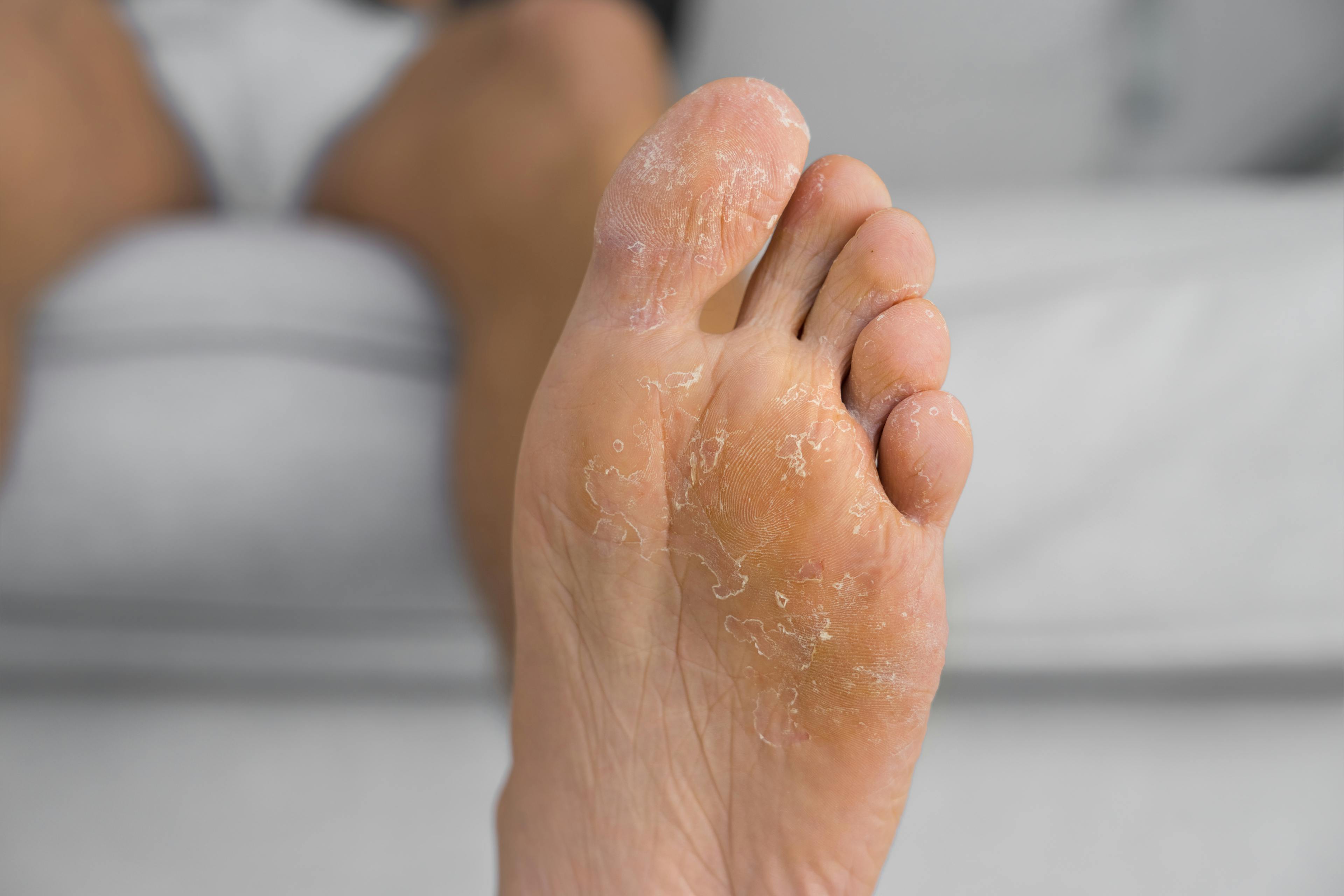Athlete’s foot is a common condition and can affect anyone. Estimates suggest 70% of the population will have athlete’s food at some point in their lives. If you’re suffering from athlete’s foot, you’ve come to the right place. Here is the rundown on what you need to know, how to get relief, and how to prevent future occurrences.
What Does Athlete’s Foot Look Like?
Athlete’s foot, medically known as tinea pedis, is a fungal infection that affects the skin of your feet. It often starts between the toes and can spread to other areas. Here’s what to look out for:
- Red, scaly rashes
- Peeling or cracking skin
- Small, itchy, or painful blisters
- Discolored and thickened toenails
- Dry, flaky skin
Recognizing these signs early can help you get the treatment you need sooner.

Athlete’s Foot Symptoms
Beyond its appearance, athlete’s foot often causes several uncomfortable symptoms. If you’re experiencing any of these symptoms, it’s advisable to seek care. You don’t have to live with this discomfort.
- Intense itching, especially between your toes
- A burning sensation in affected areas, often accompanied by redness
- Stinging, particularly if your skin is cracked or blistered
- An unpleasant odor due to fungal and bacterial growth
- In severe cases, swelling and inflammation
What Causes Athlete’s Foot
Athlete’s foot is caused by a group of fungi called dermatophytes. These fungi thrive in warm, moist environments – exactly the conditions often found in shoes. Athlete’s foot commonly spreads through skin-to-skin contact or contact with a flake of skin. You might be more susceptible to athlete’s foot if you:
- Walk barefoot in public areas like locker rooms, swimming pools, or saunas
- Wear damp socks or shoes for long periods
- Have minor skin or nail injuries
- Struggle with maintaining good foot hygiene
- Have a weakened immune system
Diagnosis and Treatment
The good news is that athlete’s foot is easily treatable. A foot care specialist will begin with a thorough clinical examination of the affected areas to assess the extent of the infection and its severity. Your podiatrist may also take skin scrapings or nail clippings for lab tests to confirm the diagnosis and identify the specific fungus. Your foot doctor will then determine which approach to take in treating your athlete’s foot. It may be one of the following options or a combination:
Topical Medications
Antifungal creams, ointments, or powders applied directly to the affected areas can be very effective.
Oral Medications
Oral antifungal medications may be prescribed for more severe or persistent infections.
Symptom Management
Anti-itch treatments and specialized moisturizers can relieve discomfort and help repair dry, flaky skin.
How to Prevent Athlete’s Foot
There are several measures you can take to reduce your risk of getting athlete’s foot:
- Wash your feet and the skin between your toes daily with antibacterial soap.
- Dry your feet completely after swimming or bathing.
- Apply talcum powder or antifungal powder to your feet to absorb moisture.
- Wear flip-flops when walking around pools, gyms, shower or locker areas, and hotel rooms.
- Wear shoes or sandals that allow your feet to get air.
- Avoid wearing rubber or synthetic shoes for long periods.
- Clean your shoes with disinfecting sprays or wipes.
- Wear socks made of natural fabrics or fabrics that dry quickly or wick moisture away from the skin.
- Wash your socks, towels, and bedding in hot water.
Your Path to Healthy Feet
Athlete’s foot doesn’t have to be a permanent problem. By following an appropriate treatment plan, you can eliminate the infection and restore your feet to health. The right treatment plan for you will depend on the severity of your infection. If you’re experiencing ongoing issues or want expert guidance on foot care, don’t hesitate to schedule an appointment with a podiatrist to help determine the best approach for your unique situation.
